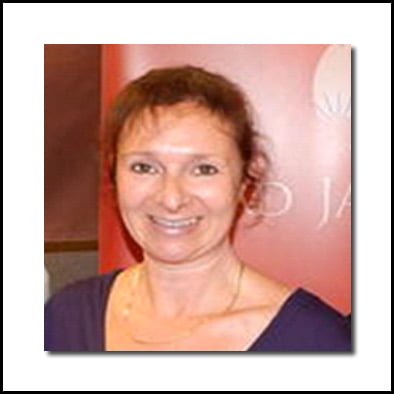As a Master trainer of Hypnosis, extensive study of the history of hypnosis has been invaluable in enhancing my understanding of both the evolution and structure of Hypnotic technique. I would like to share with you a couple of historical techniques to ignite your interest and hopefully encourage you to begin reading about the thinking of the past to substantially enhance your knowledge in now and to create your future success in the profession of Hypnosis.
The Weizenhoffer Counting Method
The Counting Method is a technique for inducing trance through repeated induction.
I know that you know something of Hypnosis, or perhaps not, right now. I’m wondering if it would it be of value to you to learn more ways to induce trance? Are you curious to learn an induction technique from waaaaaaay back? Would you like to learn a technique that can induce trance in your client rapidly and easily with very few words? I’m sure that you would like to expand your knowledge by learning a really effective repeated induction technique and raise your thinking at least 2 logical levels, don’t you?
The Counting Method is described by Andre M Weitzenhoffer in his 1957 book General Techniques of Hypnotism and can be found on page 289. This is a very important book in the history of Hypnosis and one of the only Hypnosis books referenced by Richard Bandler in his modelling studies. I encourage you to read it as someone who has a deep interest in Hypnosis.
André Muller Weitzenhoffer was born in the year 1921 in Paris, France. He was one of the most prolific researchers in the field of hypnosis in the latter half of the 20th century, having authored over 100 publications between 1949 and 2005 at the time of his death in Reno, Nevada.
Andre was the recipient of several professional and academic awards, including the Distinguished Contributions to Scientific Hypnosis Award of the American Psychological Association in 1992.
Weitzenhoffer had already been the author or co-author of 14 scientific publications and one book even before receiving his Ph.D. in Psychology from the University of Michigan in 1956. In 1957, at the invitation of Ernest R. Hilgard he moved to the Laboratory for Human Development and Department of Psychology at Stanford University. In 1962, Weitzenhoffer moved to the University of Oklahoma where he carried out research and provided clinical services at the Veterans Administration Medical Center.
Weitzenhoffer was an important figure in the beginning of the American Society of Clinical Hypnosis and one of the first associate editors of the American Journal of Clinical Hypnosis.
Weitzenhoffer claimed that he became interested in hypnosis at the young age of 12 after seeing a demonstration by a summer camp counselor and subsequently witnessing a stage hypnosis show. These experiences sparked the imagination of a young man and fed his curiosity and desire to learn more.
Weitzenhoffer had a friend who was also quite good at Hypnosis, his name was Milton Erickson. The two inquiring minds came together as friends and at times collaborators, with a mutual respect for each other’s work. However, Weitzenhoffer was critical of certain aspects of Erickson’s theory and practice, and especially critical of those who subsequently claimed to represent Erickson’s views.
Andre tells a lovely story about his experiences with Milton and Milton’s excellent utilisation of non-verbal communication, may I share it with you? In his words;
“I was attending a seminar in Philadelphia with Milton. One morning I was alone with him sitting at the breakfast table, facing him somewhat obliquely toward his left. As I recall, I was doing most of the talking. As I talked, partially absorbed in my thoughts, I became vaguely aware, peripherally, of Milton making peculiar repetitious gestures with one of his hands. Momentarily I made nothing of this, then with my awareness increasing, two things happened in very close sequence. My right hand moved out spontaneously to pick up the coffee pot which was on the table and began to lift it. With this, the realisation dawned on me that Milton wanted coffee.”
Let’s now have a look at how the counting method works. Here’s the script for your interest:
The Counting Method
Sit in a position where the client can comfortably look you in the eyes.
Say to the client:
“Please look at me. I am going to count and I want you to follow me closely. When I say ˜one’ you will close your eyes and keep them closed until I say ˜two’. When I say ˜two’ you will open your eyes. Then when I say ˜three’ you will close them again and keep them closed until I say ˜four’. Do you understand?”
Demonstrate opening and closing your own eyes as you count out loud and ask the client to watch you.
“You will keep on opening and closing your eyes as I count until they get very tired. You will find it increasingly difficult to open your eyes. They will get heavier and heavier. You will find yourself becoming more and more drowsy and sleepy. After a while your eyes will have become sooooo heavy and you will be soooo sleepy that your eyes will close and remain closed and you will go into a deep, sound sleep. You will have no desire to open your eyes, you will only want to sleep, to sleep deeply and soundly.”
“One (watch the client to ensure they are following your instructions and closing their eyes)
Two (the client should open their eyes, or attempt o, use your sensory acuity)
Three”
Continue counting until the client’s eyes remain closed. You probably won’t get very far past the count of four. When the eyes are closed give direct suggestions for sleep.
You can now give the client a positive suggestion that is good for them and then count them back to their normal waking state.
The Bernheim Method
The Bernheim Method of Induction is a rapid, direct authoritarian technique for inducing trance.
Are you curious to learn what Hypnosis looked, sounded and felt like during the 1800’s? I know that you would value knowledge of an exceptionally quick method of inducing trance in a client which only takes a minute, wouldn’t you?
The Bernheim Method of Induction is a rapid, direct authoritarian technique for inducing trance. The brief method is outlined in the book Suggestive Therapeutics: A Treatise on the nature and uses of Hypnotism, written by Hippolyte Bernheim and Christian A Herter, published in 1899. The induction is detailed on the very first page.
So, what do we know about Hippolyte Bernheim? Bernheim was born in 1840, in Mulhouse, Alsace and died in Paris in 1919. He was a French physician and neurologist. He is chiefly known for his theory of suggestibility in relation to hypnotism.
Hippolyte was a Medical Doctor, as were most of the early practitioners of trance induction. He worked as an intern at the hospital of Strasbourg, which was then part of France. He left Alsace after the Franco-Prussian War to become a professor at the Faculté de Médecine in Nancy. He was particularly interested in rheumatic fever, forms of prolonged typhus and a pulmonary phenomenon which was named the Bernheim syndrome by the South American School of Cardiology.
After teaching in the medical clinics for thirteen years, Bernheim heard of a practitioner named Liebault in one of Nancy’s suburbs. Liebault was a philosopher and philanthropist who successfully treated his patients through induced sleep. Bernheim, although very skeptical, went to call on Liebault. This was the beginning of his study of hypnotism, of suggestion, and of hysteria, which also interested Charcot and the Salpêtrière school, as well as Émile Coué, a pharmacist in Nancy. Coue invented affirmations and his favourite affirmation was ˜every day in every way I’m getting better and better’.
As early as 1884 Bernheim began to notice the key elements of Charcot’s approach with which he fundamentaly disagreed and bravely stated his opposition to Charcot’s concepts regarding hypnosis. He criticized the Parisian idea of hypnosis in three physical stages, and was the first to have the courage to say that it was a “cultural hypnosis,” which was entirely explicable by suggestion.
Likewise, Bernheim demonstrated in 1904 that the great four-phase hysteria described by Charcot was not an illness, but an emotional, psychoneurotic reaction brought about through operator suggestion and was therefore curable by the same process.
Bernheim’s most significant postulation is that all trance is the result of suggestion and nobody can be hypnotised against their will.
The Bernheim Method
Sit in a position where the client can look at you comfortable.
Say to the client:
“Look at me and think of nothing but sleep.
Your eyelids begin to feel heavy, your eyes are tired. You don’t have to close your eyes immediately.
They begin to blink, they are getting moist, you cannot see distinctly.
They are closed.”
The client is now in trance and you can give a positive suggestion which is good for the client and then count them back to their normal waking state.
The study of the past in order to inform the future has been an incredibly rewarding experience for me and I hope that this brief insight into the Hypnotic technique of the past has wetted your appetite for more. There are lots of really fascinating books to choose from, so get reading and enjoy!
Part 1
Part 2
Christine Dawson
Master Trainer of Hypnosis
 |
About the Author: Christine Dawson Christine is the Managing Director, owner and creative force behind an UK Based, International NLP Training and Coaching company.
Her vision is to provide the highest quality NLP training and coaching available and to mindfully support her students in their desire to make incredible change to their lives and to the lives of others. Her passion and enthusiasm for NLP is clearly evident in all of her trainings, having experienced the magical changes that can be achieved first hand. |

